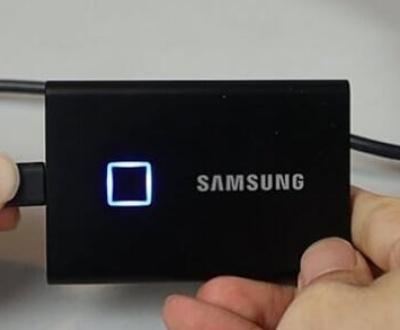Different methods are suitable for various scenarios and user requirements.
Method 1: Using the Built – in Format Function in Operating Systems
Connect the External Hard Drive
Use the appropriate cable (such as USB) to connect the Seagate external hard drive to your computer. Wait for the computer to recognize the drive. On Windows, you can usually see it appear in “This PC” as a removable storage device. On macOS, it will show up on the desktop and in the “Finder” sidebar.

Format on Windows
Open “This PC”. Right – click on the Seagate external hard drive icon. Select “Format” from the context menu.
In the format window, you can choose the file system. For general use, NTFS is a common choice for Windows, which supports large file sizes and has features like file – level security. FAT32 is more compatible with a wider range of devices, but has limitations on file size (max 4GB per file).
You can also choose to perform a quick format or a full format. A quick format only deletes the file allocation table, which is faster but allows for relatively easy data recovery using specialized software. A full format writes zeros or random data over the entire drive, making data recovery much more difficult. It takes longer, especially for large – capacity drives. After setting the options, click “Start” to begin the formatting process.
Format on macOS
Open “Disk Utility”, which can be found in the “Applications/Utilities” folder. In Disk Utility, locate the Seagate external hard drive in the sidebar. Click on it to select it.
Click the “Erase” button at the top of the Disk Utility window. In the “Format” dropdown menu, you can choose a file system. APFS is the recommended file system for macOS, providing features like space sharing, fast directory sizing, and strong encryption support. HFS+ is also an option, especially if you need compatibility with older macOS versions or some non – Apple devices.
Enter a name for the drive in the “Name” field. Then, click “Erase” to start the process of wiping the drive and formatting it with the selected file system.
Method 2: Using Third – Party Disk Wiping Software
DBAN (Darik’s Boot and Nuke)
Download and Prepare: Download the DBAN ISO image from the official website. You will need to create a bootable media (such as a USB drive or a CD/DVD) using software like Rufus (for USB) or ImgBurn (for CD/DVD) on Windows, or Disk Utility on macOS to write the ISO image to the media.
Boot from the Media: Insert the bootable media into your computer and restart the computer. You may need to enter the BIOS/UEFI settings (usually by pressing a key like Del, F2. or Esc during the computer’s startup process, depending on the manufacturer) and change the boot order to make the computer boot from the newly created media.
Run DBAN: Once booted into DBAN, it will automatically detect the connected hard drives, including the Seagate external hard drive. You can choose the drive you want to wipe. DBAN offers different wiping algorithms, such as DoD 5220.22 – M (Department of Defense standard), which overwrites the data multiple times. Select the desired algorithm and start the wiping process. This can take a long time, especially for large – capacity drives, as it writes multiple passes of data over the entire drive.
Parted Magic
Download and Create Bootable Media: Download the Parted Magic ISO file. Similar to DBAN, create a bootable USB or CD/DVD using appropriate software.
Boot and Access Disk Wiping Tools: Boot your computer from the Parted Magic media. Once in the Parted Magic environment, you can access various disk – related tools. Locate the disk wiping utility. Parted Magic provides options to securely erase the drive, often with different levels of security, such as single – pass, multi – pass, or algorithms based on industry standards. Select the Seagate external hard drive and choose the wiping option that suits your needs. Then, start the process to wipe the data on the drive.
Method 3: Secure Erase Features in Hard Drive Firmware (if available)
Check for Compatibility
Some Seagate hard drives support a feature called Secure Erase, which is built into the drive’s firmware. However, not all models have this functionality. You can check the Seagate official website for the product documentation of your specific external hard drive model to see if it supports Secure Erase.
Use Drive – Specific Tools or Motherboard BIOS Features
For some Seagate drives, Seagate may provide a dedicated tool (such as SeaTools for DOS in some cases) that can be used to access the Secure Erase feature. You would need to create a bootable media with the tool, boot your computer from it, and then use the tool to initiate the Secure Erase process for the external hard drive.
In some cases, if your computer’s motherboard supports it, there may be an option in the BIOS/UEFI settings to perform a Secure Erase on connected hard drives. This usually requires the drive to be connected directly to the motherboard (which may not be straightforward for an external drive), but in some systems with appropriate USB – to – SATA bridge support, it could potentially work. The process involves entering the BIOS/UEFI, navigating to the appropriate storage or security – related settings, and selecting the option to perform a Secure Erase on the Seagate external hard drive.
About us and this blog
Panda Assistant is built on the latest data recovery algorithms, ensuring that no file is too damaged, too lost, or too corrupted to be recovered.
Request a free quote
We believe that data recovery shouldn’t be a daunting task. That’s why we’ve designed Panda Assistant to be as easy to use as it is powerful. With a few clicks, you can initiate a scan, preview recoverable files, and restore your data all within a matter of minutes.
Subscribe to our newsletter!
More from our blog
See all postsRecent Posts
- How to recover deleted voicemail samsung? 2025-04-22
- Samsung portable ssd t5 online recovery 2025-04-22
- Fix western digital external hard drive 2025-04-22

 Try lt Free
Try lt Free Recovery success rate of up to
Recovery success rate of up to









